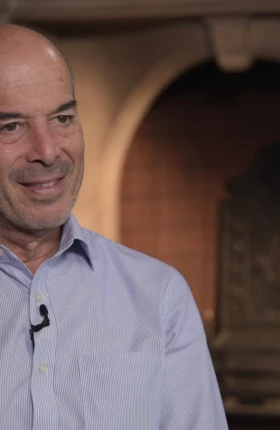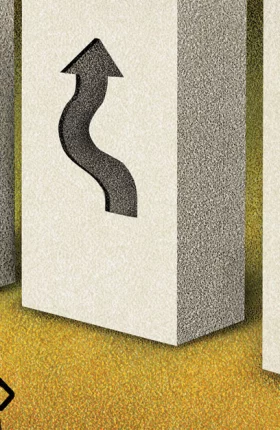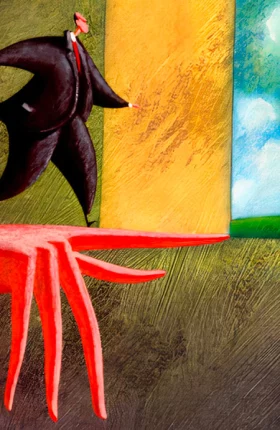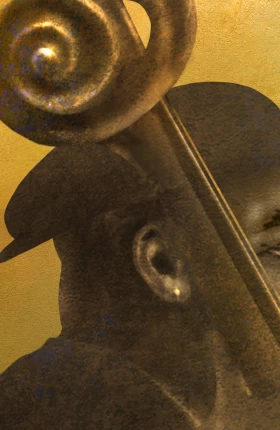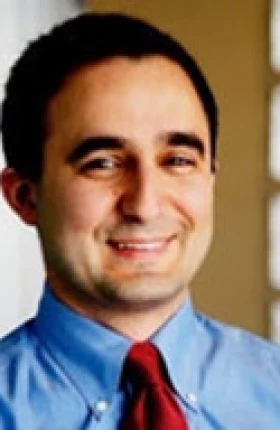Michelangelo died in 1564 at the age of 88, having made a name for himself as a “divine artist” and the most important sculptor of the Renaissance. He was the first artist to be deemed a genius by contemporary art historians like Vasari and Condivi. The accolades had much to do with his skill, of course, but it helped that Michelangelo had a deliberate strategy for positioning himself as a unique artist.
Determination and Destiny
Michelangelo was raised by a nanny who lived near a stone quarry. He said that when he was a baby, the dust of the marble blended with his mother’s milk.
In his youth, Michelangelo had the usual disputes that children have with their parents. He wanted to become an artist. His father disapproved. But with his artistic skills already apparent at an early age, Michelangelo became an apprentice to the painter Domenico Ghirlandaio. It was during this period that he learned the art of fresco painting.
In fresco painting, the artist applies water-based paint to a wet—or fresh (fresco)—wall. Because the paint fuses with the wall, the work can last for centuries. The downside is that you have to work quickly, and it’s not possible to repaint scenes and images as you would with oil paint. Michelangelo’s time as an apprentice painter of frescoes was an important stepping stone in the creation of one the world's most celebrated works of art: the painted ceiling of the Sistine Chapel in the Vatican.
Surprise the Right People with Your Skills
Later, Michelangelo worked in the garden of Lorenzo de’ Medici, the ruler of Florence, where he created a marble statue of an old man. Lorenzo liked the statue but pointed out that the man had too many teeth for someone his age. Michelangelo removed some of the teeth, not clumsily but in a way that looked completely natural, as if the old man has lost his teeth years before. Lorenzo was impressed and decided to support the promising young artist.
Go Beyond the Possible
When the Florentine authorities were looking for a statue that would embody the spirit of the city, David—the young shepherd who defeated the giant Goliath—was a natural choice. A giant block of marble was available, but other sculptors said it was flawed and refused to work with it. Michelangelo saw things differently.
Michelangelo made his figure of David 14 feet tall and completely naked, holding a sling. This David was not just David. It was David interpreted by Michelangelo and wrought in a way that overshadowed the hero’s depiction in the Bible.
To make his statue truly stand out, he took a unique perspective on his subject, showing the young man with nothing but the sling he used to kill Goliath. His David, a symbol of resistance against strong enemies, became the most famous statue in the world.
Again, Michelangelo’s flair was grounded in his skill. He was one of the first artists to dissect corpses in order to understand how the human body looks from the inside. His characterization of his own work—that he simply released statues from marble—belied his meticulous practice and attention to detail.
Combine Details with the Big Picture
When Michelangelo was in Rome, working on the tomb of Pope Julius II, the pope made a request. He wanted the ceiling of the Sistine Chapel painted. He told Michelangelo what he wanted the work to show, but Michelangelo decided that was not enough. He wanted to depict the whole story of creation, focusing not just on the New Testament, as the pope requested, but on the Old Testament as well. Using the fresco technique he had learned from Ghirlandaio, he painted figures so vivid they appeared almost three dimensional. Just as stunning was the balance he achieved. The ceiling is full of details, but the overall composition is orderly and clear.
Michelangelo worked for more than four years on the Sistine ceiling, and it’s difficult to overstate the significance of what he created. Michelangelo’s depictions—in particular, the image of God creating Adam—became part of the West's cultural consciousness.
Again, Michelangelo redefined the art of the possible and set new standards. Before his work on the Sistine Chapel, Michelangelo wanted to be considered a sculptor. While working on the chapel, he became not only a painter but a unique brand—one of a kind. He was simply Michelangelo. Il Divino. Not unlike the Old Testament God whom he painted on the ceiling, he did not tolerate any gods before him.
The Monopoly of Michelangelo
In his book, Zero to One, Silicon Valley investor Peter Thiel points out that if you have competition, you’re doing something wrong. A real capitalist wants a monopoly and no competition.
Michelangelo thought similarly. He did not tolerate competition. He always tried to raise the bar—to make himself incomparable. His strategy was to present his life as an artist as his destiny, to surprise the most important people with his skill, and to create sculptures and images that were unparalleled.
At the end of his life, when asked to construct the dome of St. Peter’s Basilica, he surprised everyone by saying that he would not accept payment for it. It was an act of generosity toward God; the payment would come in the afterlife.
Michelangelo was not only an artist with exceptional skill and a tireless work ethic. He was a competitor who was keenly aware of his own brand. As Linda Murray put it in her biography, “Michelangelo became as no other before or since the archetype of the artist: Dedicated, solitary, single-minded, tormented, harassed, unsatisfied, and undefeated.”
